What do roe deer look like?
Roe deer are graceful with a white chin and rump patch and a black nose; coat is redder in summer. Male’s antlers are short and erect. Muzzle shorter than in red deer; stance more upright and ears more pointed than in muntjac.
A week-old kid’s brown fur is spotted with creamy markings, providing excellent camouflage in the roe deer’s preferred habitat at the edges of woods and forests. These spots will fade over the next couple of months.
How big are roe deer?
An adult is between 0.6–0.75m at their shoulders and between 0.85–1.4m in length. They weigh between 8–22kg.
What do roe deer eat?
Mainly the leaves and buds of trees, shrubs and wildflowers; also arable crops and grasses.
Though most commonly seen at dawn and dusk, when fewer people are around and they’re most active, roe deer forage day and night. In fact, they feed every three or four hours, spending long periods lying and ruminating between grazing and browsing.
When do roe deer breed?
Rut takes place July–September. Female gives birth in April–early June after a 10-month gestation (including five months of delayed implantation); the usual litter size is twins. In their first weeks, kids are highly vulnerable to predation from red foxes and to dog attacks.
Do male roe deer fight?
Males become highly aggressive during the rut, from mid-July to late August, defending territories and vying for access to does. Fighting usually consists of locking antlers, twisting and shoving, which can sometimes cause serious injuries.
To mark his territory a roe buck will make a scrape with his hind feet, which will contain scent secreted from interdigital glands in the feet's clefts.
As well as using scrapes to mark their home ranges, bucks also rubbing branch and other vegetation with scent glands on their foreheads. They’re only seasonally territorial, between about March and August
Where do row deer live?
Their favoured habitat is open woodland, especially rides, clearings and areas bordering fields, but frequent farmland if thick hedgerows are present.
How long do roe deer live for
Their lifespan is usually up to 10 years.
How many roe deer are there in Britain?
Roe deer are Britain’s most numerous deer, with the pre-breeding population estimated to be 500,000–800,000.
How to age a row deer via its antlers
You can learn a lot about a roe buck simply by looking at his antlers.
Roe have simple antlers that take the same time to regrow (about four months) as those of larger deer.
Antler size is determined by age, condition and food; a buck can produce a poor set one year but a good set the next.
In Britain, some of the biggest roe buck antlers are found in Wiltshire and Sussex.
Yearling
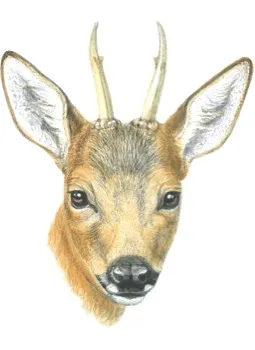
Roe antlers grow on pedicles, part of the frontal bone of the skull. A male kid develops a small button on his pedicles during his first few months; this will be shed in spring, when he grows his first antlers: usually short spikes.
Year two
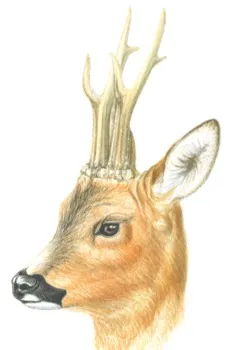
The buck’s second set of antlers are usually short, though they may feature small tines (points) and a secondary branch. The antlers have little pearling (knobbly lumps) on the main shaft; the coronet at the base is small.
Year three
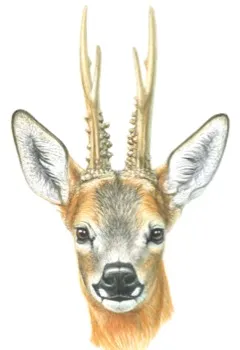
By now the buck’s antlers usually have three tines (normally the maximum in roe). The pearling is developing; the coronets are still separate. Overall, the antlers still look fairly slender. The pedicles get shorter each time the antlers are cast.
Years five to seven
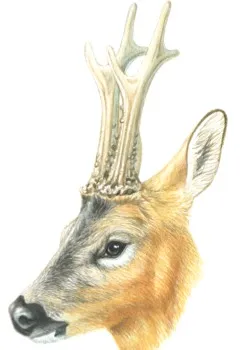
The antlers look best at about seven years old; in a strong buck they will be 30cm long, though generally still with three tines. The antlers are thicker, the pearling covers much of the shaft and the coronets usually meet.
Perruque
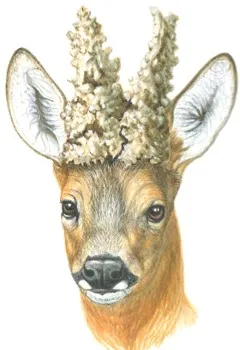
Deformed antlers are common in roe deer – the most extreme form is a ‘perruque’. Rising levels of testosterone normally stop antler growth, but if this does not happen (due to a testicular injury) the antlers become a spongy mass of bone and velvet.
Main image © Getty Images